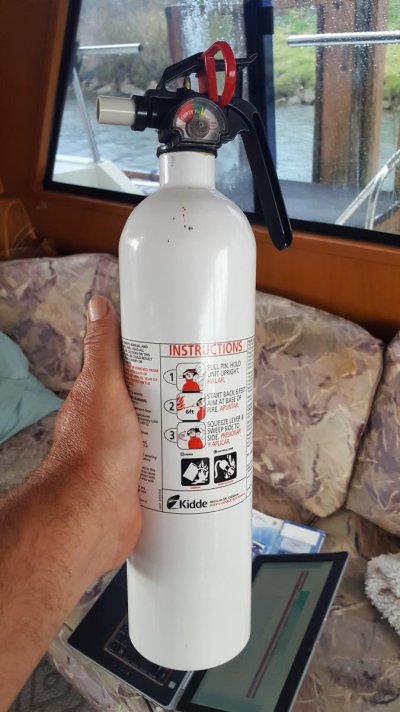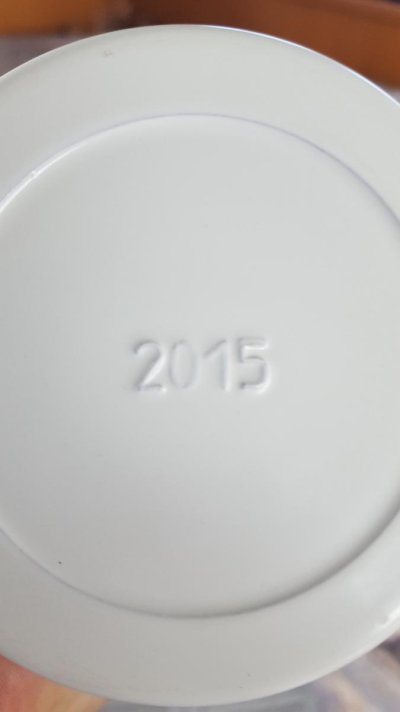As far as I know these are still current.
https://www.trawlerforum.com/forums...6213-0b530bd44091c0b4519310a84d5193f2b8754df0
PORTABLE FIRE EXTINGUISHER INSPECTION AND MAINTENANCE FAQ
Where can I find the requirements for inspection and maintenance of portable fire extinguishers?
All USCG approved portable fire extinguishers have a statement on the label that the extinguisher is to be inspected and maintained in accordance with NFPA 10.
The NFPA 10 requirement is consistent with long-standing standard industry practice in the US (shoreside and marine). It is a means to ensure that the appropriate DOT requirements for pressure vessels and EPA requirements as applicable to portable fire extinguishers are addressed. The reliance on NFPA 10 was fully vetted in the 1994 rulemaking process for 46 CFR Subchapters T and K (however, recent changes to NFPA 10 have caused some confusion concerning the training necessary to perform the inspections and the maintenance).
What are the “inspections” required by NFPA 10?
The “inspections” listed in NFPA 10 are a quick check of the extinguisher’s condition to verify that it is in operating condition. The inspections are to be performed monthly by the vessel owner, operator or designated person in charge. The inspections are intended to verify that the extinguisher has not been damaged, and the extinguisher is full and has not been partially discharged.
What is the ”maintenance” required by NFPA 10?
Maintenance is thorough check of the extinguisher’s condition, which involves a complete check of all mechanical parts, the extinguishing agent, and the pressurizing agent. Maintenance is to be conducted at intervals not exceeding one year, or whenever an inspection indicates a deficiency in the extinguisher’s condition. Since maintenance may involve disassembling the extinguisher, replacing parts, performing repairs or recharging, it should be done by individuals that have been specifically trained and have the necessary equipment, manufacturer's servicing manuals, and recommended replacement parts.
What training is required for extinguisher maintenance?
Certification or licensing by the state or local jurisdiction as a fire extinguisher servicing agency should be required for annual maintenance of extinguishers with one exception. There are a number of approved small extinguishers that are not intended to be recharged (typically B-I rated extinguishers). The fire extinguisher label will clearly state that the extinguisher is non-refillable or non-rechargeable and is to be removed from service at a maximum interval of 12 years from the date of manufacture. Because these units cannot be recharged, the annual maintenance requirements do not require disassembly of the extinguisher. Due to the special responsibility of the owner or operator of a vessel for the safety of the crew and vessel, the USCG considers that the annual maintenance for non-rechargeable extinguishers may be performed by those designated by the owner or operator. Thus, a qualified servicing agency is not required for maintenance of non- rechargeable extinguishers. However, a record of maintenance must be available for the use of the Coast Guard inspector.
What does maintenance of a non-rechargeable extinguisher entail?
The following items should be included in the annual maintenance of non-rechargeable portable extinguishers:
1. Verify that 12 years has not lapsed from the manufacture date marked on the extinguisher.
2. Check that the pressure gage or pressure indicator is in the operable range. If there is no gage or indicator, verify the weight or fullness of the unit.
3. Verify there is no physical damage to the extinguisher, discharge hose (if provided) and bracket.
4. Check for missing or broken safety seals or tamper indicators.
5. Examine the extinguisher for obvious signs of corrosion, leakage or clogged discharge nozzle.
If any deficiencies other than the bracket are noted, the non-rechargeable extinguisher should be replaced. A damaged bracket should be replaced. The replacement bracket must be a bracket listed as approved for use with that extinguisher.
(Nothing in the above should be viewed as superseding any additional requirements specified in 46 CFR Subchapters K and T or elsewhere in the CFR.)
March 25, 2010







 )
)